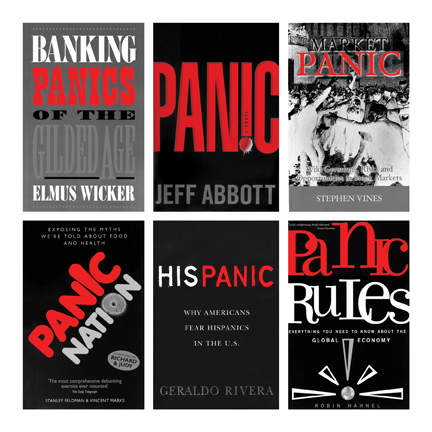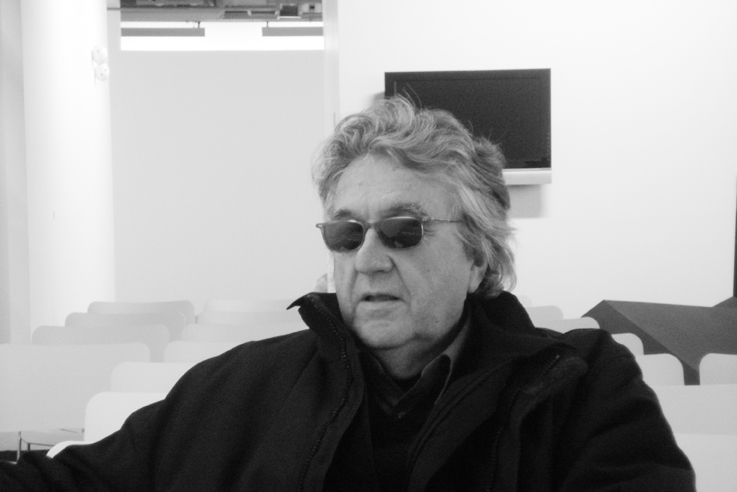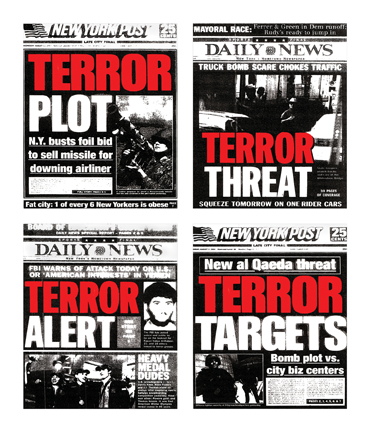[Spring 2009]
by Jacques Doyon
Jacques Doyon : We can imagine that The Construction of Fear will deal with how the media offer a reading of social and political events that maintains a sense of constant threat and engenders protectionist attitudes rather than developing a comprehension of the issues and encouraging a desire to act on events. Can you talk about the main theme of this exhibition and the context of production of the work for which the exhibition is named?
Antoni Muntadas : The exhibition project at the Galerie SBC in Montreal includes a number of pieces brought together under the title The Construction of Fear. The title piece is a wall work composed of newspaper headlines in which the word “fear” appears. An early version of this piece was presented at the Kent Gallery in New York in May 2008, with materials coming essentially from last year’s press in the United States; that is why most of the headlines are in English, but there are also a few headlines from the European press. The work uses the original typography and layout from the front pages of these newspapers, blowing them up and underlining in red the iterations of the word “fear,” without reproducing the articles. Viewers may doubt the authenticity of these headlines until they find the publication references for each headline. They can then gauge the scope of the phenomenon and the amount of subjectivity and inanity inherent to this construction of fear in the media. The work extends over two of the gallery’s walls. Initiated around the word “fear,” the work then expanded to include the use of the words “panic” and “terror,” which are presented as separate corpuses of the same work.
The media are important players in the establishment of this trend, but it also extends into the cultural arena. An enormous quantity of books recently published on all subjects, in genres sometimes distant from social and political issues, such as literature, use these words as leitmotifs. The phenomenon is not new. It can be seen in the American media as far back as 1955, during the Korean War. September 11, 2001, offered an opportunity for a new political instrumentalization of fear relayed by the media. More recently, we have seen, in different legislatures, a similar occurrence with the exaggerated use of the word “crisis,” which fostered a real psychosis and paved the way for the crisis even before it was proved to exist.
JD : The exhibition will include several other works of recent years that deal with other aspects of the media’s fabrication of fear. Would you talk about the content of these works and the context in which they were created?
AM : The exhibition will also include the series Cercas [fence or wire mesh, in Brazilian], a work that currently includes twelve images showing the walls, wire fences, and barricades built to protect the houses in Sao Paulo. It’s a work under development about which I am having conversations with the anthropologist Teresa Caldeira, author of the book Cidade de Muros: Crime, Segregação e Cidadania Em São Paulo [The walled city: crime, segregation, and citizenship in Sao Paulo]. The phenomenon has now reached the middle classes, and security companies are now the most flourishing enterprises in the city. I’m currently developing a new part of this project that will be called Alphaville, on the gated community of the same name.
The exhibition also includes two works that were produced independently of these series but fall within my research on the mechanisms of the construction of fear. These are two videos, On Translation: Fear/Miedo and On Translation: Miedo/Jauf (“fear” in Arabic), which feature the issues on the borders between Tijuana and San Diego and between Tarifa and Tangiers, respectively.2 Both works were designed as public interventions and for broadcast on television in the two localities on either side of the border and in the two capitals of the countries concerned. On Translation: Miedo/Jauf was even broadcast by the Al Jazeera network.
By taking us from the private domain to the public sphere, these works lead us to a more complex level in which individual fear and state paranoia are brought together and confront each other. The public sphere thus encompasses and influences personal decisions. These two video works deal not so much with immigration activities as with the fear maintained around these phenomena of transit, migration, and displacement. They deal with the way in which fear is introduced on either side of the border, the prevailing clichés and stereotypes, and people’s perceptions. The videos begin with answers given by various people to the question, What does fear mean to you? The interpretations are very diverse, of course, going from fear of the dark and fears related to childhood to fear of solitude and death. From these most intimate situations, the topic is broadened gradually to questions related to the situation of the city, the role of the media, and the general political situation. The case of the border between Spain and Africa is more complex, since it includes phenomena of religion and terrorism that are less in evidence at Tijuana/San Diego.
JD : This climate of fear is materialized in a security system …
AM : Yes … a security system that I link to the disappearance of the public space, which is more and more privatized. Essentially, all of these monitoring and surveillance systems are established not for the protection of individuals, but to protect the interests of corporations or the state.
I want to mention a personal anecdote that seems revealing of this state of affairs. My computer was recently stolen in the Madrid train station, directly under the eye of a surveillance camera. I asked that the images be used to recover my laptop and all the information it contained, but my request was rejected, under the pretext that it wouldn’t be useful, that the images wouldn’t be clear enough. Period. Each time we move around in an airport, we are literally “under fire” by surveillance cameras, but this entire system is not aimed at protecting individuals. It is used solely to protect the interests of the airport, the corporation, the institution.
JD : Your work is permeated with concerns about the shaping of modes of perception and ways of life that are more and more standardized, abstract, and generic, to the detriment of a sense of place and concrete, specific situations. How are these concerns combined in your work?
AM : In general, I can say that I work concurrently in two fields. My works anchored in specific places and contexts generate long-term projects in which I often invest a great deal of time. This is the case, for example, for the Alameda Park project in Mexico City, the project on memory spaces in Bremen, the urban train project in Puerto Rico, the project on borders, my different projects in Sao Paulo, including the one on Alphaville, and another currently underway in Istanbul. But I also produce other types of projects that deal with globalization and standardization phenomena in our societies. The Fundación Marcelino Botín, in Santander [Spain], has just published a catalogue3 that emphasizes this aspect of my work, in connection with Marc Augé’s notion of “non-place.” These works are based more on a sort of biography of displacement. It is a little like notes, observations on the social space and geography of territories, in their more generic and decontextualized dimensions. These two aspects of my work are complementary and ultimately attached to the notion of context, which I see as essential.
AM : For me, each exhibition is a project. In this case, the exhibition is articulated around the idea of a construction of fear and involves both works that refer to specific situations and others that refer to more global situations. The mural The Construction of Fear is composed of major headlines taken from the American press, but one would probably find their equivalent in the Canadian press. This would be a new project. When I work in a new context, I like to be able to talk with experts who express different points of view. Such interdisciplinary exchanges nurture me. My position is ultimately that of the artist whose responsibility is to observe the phenomena that are around him and react to the issues of his times.
2 These two videos will be projected, in presence of the artist, on April 10, within a three-day programmation, Muntadas’ Videography from 1971 to 2008, presented at the Cinémathèque québécoise on the 8, 9 and 10 of April 2009.
3 Christopher Phillips, curator, Muntadas – espacios, lugares, situaciones (Santander, Spain: Fundación Marcelino Botín, 2008) (with English-language texts).



